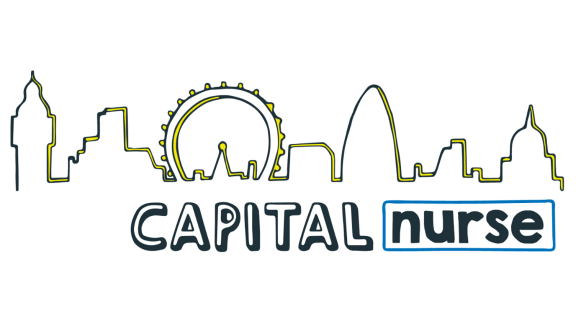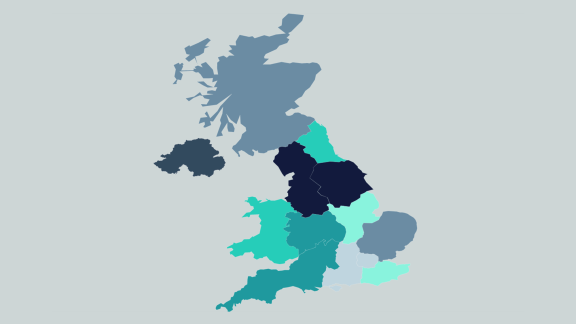Robotic process automation in recruitment

Robotic process automation (RPA) is the automating of routine, manual processes with software that performs the tasks automatically. This case study, originally published in 2021, explains the advantages of using RPA and now includes an update on the progress of the work several years later.
Overview
The project to automate recruitment processes at the Royal Free London NHS Foundation Trust began in 2017. The trust used RPA to automate high volume, manual, repetitive tasks which helped them to improve candidate experience, reduce costs and free up staff capacity to allow them to work on value adding tasks, thereby improving their employment experience.
Key benefits and outcomes
- Closed gap on nursing vacancies through faster time to hire.
- Reduced trust’s reliance on bank and agency staff.
- 95 per cent of new starters said they were satisfied or very satisfied with their onboarding experience – up from 70 per cent when the project began.
- 100 per cent of junior doctors received job offer in line with code of practise target – up from 35 per cent in August 2018.
- Head count reduction target met, 20 per cent reduction in WTE and a further 10 per cent redeployed into value adding roles.
What the organisation faced
The organisation was faced with the challenge of reducing both the recruitment department’s cost and the trust’s bank and agency staff spend. They also needed to fill vacancies more quickly and improve candidate and staff experience.
What the organisation did
Once the decision to automate recruitment processes had been made, the trust went out to tender for a commercial partnership to get things underway. Now, several years after the successful implementation of RPA, the trust has built its own, in-house automation service and is beginning to establish an innovation academy to share the benefits of RPA more widely.
Automating processes was considered (and has now been deployed) in multiple parts of the organisation. It was clear early on that in recruitment, many of the manual and repetitive tasks in the process could be automated to run more quickly and efficiently. Initial calculations suggested the use of RPA would both reduce headcount in the department and free up remaining staff to spend more time on value added work, such as advising managers on how to improve job adverts - particularly for hard to fill roles – or to improve shortlisting, and giving staff more scope to make decisions to improve their own working experience.
The RPA robot, better known as Speeds Things Up (STU), was programmed to automatically complete many of the tasks in the recruitment process. Previously, pre-employment paperwork would be posted to applicants who would complete and post back the forms to the trust. The completed forms would then be uploaded to the computer system by someone in the recruitment team.
Now STU simply sends everything to applicants via email, who complete it online and send it back electronically, ready for STU to process directly onto the system.
Several other tasks in the recruitment processes at the Royal Free London are now automated and technology works with TRAC and ESR. In the process flow that accompanies the case study, readers can see where the elements of the candidate offer and selection phase, pre-employment checks and management of the new hire are all automated, making for a quicker, more efficient onboarding process and a much more positive candidate experience.
Results and benefits
RPA has massively helped the Royal Free NHS Foundation Trust to improve both their candidate experience and their staff experience, has saved the organisation money and has improved the work of the trust’s recruitment function.
After introducing STU to the recruitment team, the trust was able to offer candidates a more personal, user-friendly experience. As the robot was completing manual processes automatically, it freed up staff to speak with candidates on the phone, to respond to candidate queries and to pro-actively address blockages in the employment pipeline.
Candidates have provided the trust with some really strong feedback: “I have never seen a more efficient recruitment team. I am really looking forward to starting!”.
The efficiency of the recruitment team has been noted by many applicants. The table below shows how much quicker STU is at processing certain jobs:
| Process | Average time before STU | Average time by STU |
| Sending offer letters | 20 mins | 5 mins |
| IAT Request | 10 mins | 2 mins |
| Payroll Hire | 30 mins | 10 mins |
| Candidates returning paperwork | 10 working days | 6 working days |
This means that the Royal Free London has been able to fill vacancies much more quickly. This has reduced that organisation’s reliance on bank and agency staff, saving the organisation money.
As STU is completing the paper processing and data input tasks, jobs staff typically found boring and dull, the organisation was able to consider how it could maximise talent and improve the experience of staff working in the department. “Nobody joins a recruitment team to spend the whole day in front of a computer” was one notable piece of feedback from someone who had left the organisation. With STU handling most of the data input, roles are being redesigned so that this no longer needs to happen.
Instead, the Royal Free London spent time designing roles that are more interesting and add value to the recruitment function. They give staff more responsibility and opportunity to make decisions. The time freed up by automating processes means that staff can spend more time working with managers to improve job adverts and shortlisting criteria, and are able to provide more narrative around the data the recruitment team hold, offering valuable insights to managers. They have been able to but more resource into open days, which have more than doubled as staff time has been freed up.
Overcoming obstacles
The trust found automating processes to be a hard sell originally. It took time to explain the benefits of automation and how it could improve candidate and staff experience. Involving staff in design of both processes and future roles was key to overcoming this.
People have genuine and legitimate concerns over data security and integrity, and a reluctance to trust robots over humans to safeguard data. However, evidence shows that while humans are fallible and prone to human error, robots are not as they cannot deviate from the task they have been programmed to complete. Security and integrity of data is thus enhanced, rather than threated by automation.
There is, of course, an initial investment to get up are running with RPA. However, this is paid back rather quickly, in 12-18 months in the Royal Free London’s instance.
Update: September 2025
Since this case study was published in 2021, North London Partners Shared Services (NLPSS) was formed from 10 acute trusts (including Royal Free) and it has taken this work forward by embedding the technology to automate high volume, manual recruitment tasks across these organisations. This has seen huge benefits for its services and the project has won an award.
Find out about the progress of this work in the blog: The value of robotic automation in NHS recruitment.
Take-away tips
- Explore the benefits automation can bring to staff experience. This will help staff understand how the employment experience can be enhanced rather than threatened by automation.
- Identify HR processes that are manual and routine. These are perfect to automate.
- Calculate how much time can be saved by automating processes. Invest this time in value added tasks.
- Speak to organisations that have already automated processes. The programming involved in automating tasks can be replicated, so you won’t have to reinvent the wheel.



